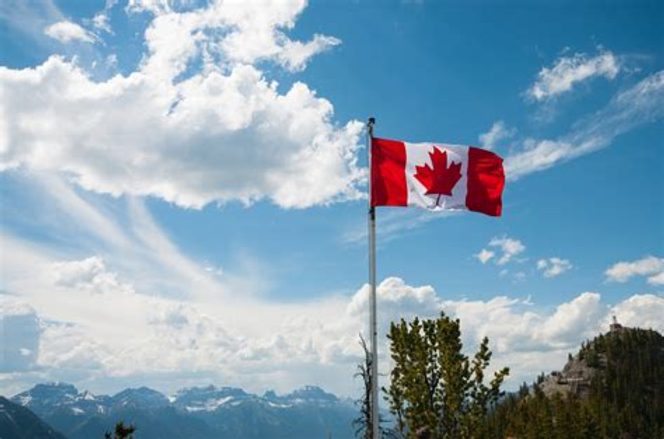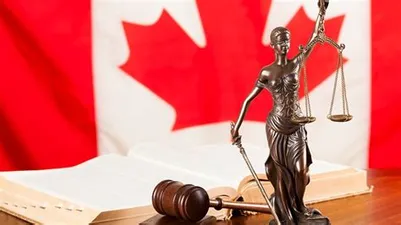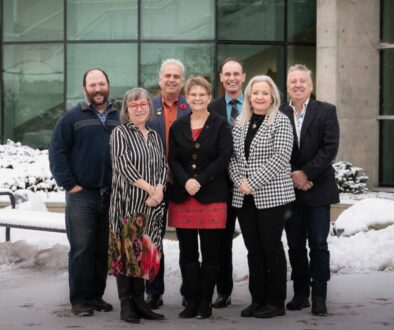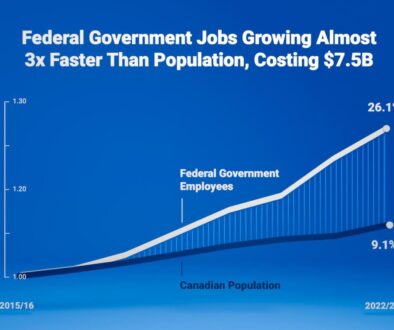Made in Canada/CANADA
Donald Trump has mentioned multiple times that Canada/CANADA should become the 51st state of the United States. His administration continues to threaten tariffs on certain products which suggests they are not bluffing. He just told us what he can do and is waiting for the feedback. Is it all a political game or is it something more serious?
It did not take long for “Canadians” to react. Social media and comments on online platforms show the public are strongly polarized on the issue, being either strongly for or against the idea. Numerous social groups have popped up supporting Canadians products and Canadian national identity, etc.

First and foremost it is necessary to understand the legal definition of what Canada or CANADA actually is?
The definition of “Canada” in Section 35(1) of the federal “Interpretation Act is: “Canada, for greater certainty, includes the internal waters of Canada and the territorial sea of Canada; (Canada)”. https://www.canlii.org/en/ca/laws/stat/rsc-1985-c-i-21/latest/rsc-1985-c-i-21.html?searchUrlHash=AAAAAQAUImludGVycHJldGF0aW9uIGFjdCIAAAAAAQ&resultIndex=1
“Internal waters”, as per the Interpretation Act, are:
internal waters,
- (a) in relation to Canada, means the internal waters of Canada as determined under the Oceans Act and includes the airspace above and the bed and subsoil below those waters, and
- (b) in relation to any other state, means the waters on the landward side of the baselines of the territorial sea of the other state; (eaux intérieures)
The Oceans Act states: 6 The internal waters of Canada consist of the waters on the landward side of the baselines of the territorial sea of Canada.
Regarding “territorial sea”, the Interpretation Act states it is:
territorial sea,
- (a) in relation to Canada, means the territorial sea of Canada as determined under the Oceans Act and includes the airspace above and the seabed and subsoil below that sea, and
- (b) in relation to any other state, means the territorial sea of the other state as determined in accordance with international law and the domestic laws of that other state; (mer territoriale)
From the Oceans Act:
4 The territorial sea of Canada consists of a belt of sea that has as its inner limit the baselines described in section 5 and as its outer limit
- (a) subject to paragraph (b), the line every point of which is at a distance of 12 nautical miles from the nearest point of the baselines (which basically means from the shoreline to 12 nautical miles out to sea); or
- (b) in respect of the portions of the territorial sea of Canada for which geographical coordinates of points have been prescribed pursuant to subparagraph 25(a)(ii), lines determined from the geographical coordinates of points so prescribed.
Determination of the baselines
5 (1) Subject to subsections (2) and (3), the baseline is the low-water line along the coast or on a low-tide elevation that is situated wholly or partly at a distance not exceeding the breadth of the territorial sea of Canada from the mainland or an island. (Means where low tide sits is the baseline.)
Canada starts at the point of low tide {the baseline} and goes out to sea 12 nautical miles.
This one sounds like they are claiming the beaches that are exposed during low tide:
Low-tide elevations
(4) For the purposes of this section, a low-tide elevation is a naturally formed area of land that is surrounded by and above water at low tide but submerged at high tide.
person, or any word or expression descriptive of a person, includes a corporation; (personne)
province means a province of Canada, and includes Yukon, the Northwest Territories and Nunavut; (province)
territory means Yukon, the Northwest Territories and Nunavut; (territoires)
From the Oceans Act, the definitions of “federal laws” and “law” are as follows (note that only the Legislatures of Yukon, Northwest Territories and Nunavut are mentioned, confirming that what we think of as the ten provinces are not a part of things):
federal laws includes Acts of Parliament, regulations as defined in subsection 2(1) of the Interpretation Act and any other rules of law within the jurisdiction of Parliament, but does not include laws of the Legislature of Yukon, of the Northwest Territories or for Nunavut; (droit)
law, in respect of a province, includes a law or rule of law from time to time in force in the province, other than federal laws, and the provisions of any instrument having effect under any such law; (droit)
From Canada’s “Citizenship Act” https://www.canlii.org/en/ca/laws/stat/rsc-1985-c-c-29/latest/rsc-1985-c-c-29.html?searchUrlHash=AAAAAQARImNpdGl6ZW5zaGlwIGFjdCIAAAAAAQ&resultIndex=1:
child includes a child adopted or legitimized in accordance with the laws of the place where the adoption or legitimation took place; (enfant)
citizen means a Canadian citizen; (citoyen)
citizenship means Canadian citizenship; (citoyenneté)
Interpretation
(2) For the purposes of this Act,
- (a) a person is deemed to be born in Canada if the person is born on a Canadian vessel as defined in section 2 of the Canada Shipping Act, 2001, or on an aircraft registered in Canada under the Aeronautics Act and regulations made under that Act;
The “Canada Shipping Act, 2001” defines Canadian Vessel as follows:
Canadian vessel means a vessel that is registered or listed under Part 2 (Registration, Listing and Recording) or that is exempted under the regulations from the registration requirement in subsection 46(1). (bâtiment canadien)
Citizenship is effectively a ship to your person uses to navigate the waters of Canada.
From the Canada Shipping Act: qualified person means (a) a Canadian citizen or a permanent resident within the meaning of subsection 2(1) of the Immigration and Refugee Protection Act; or (b) a corporation incorporated under the laws of Canada or a province. (personne qualifiée)
From the Territorial Lands Act: land includes mines, minerals, easements, servitudes and all other interests in real property; (terre) https://laws-lois.justice.gc.ca/eng/acts/T-7/FullText.html From the same Act: territorial lands means lands, or any interest in lands, in the Northwest Territories or Nunavut that are vested in the Crown or of which the Government of Canada has power to dispose. (terres territoriales) Interestingly, they have left out the Yukon in this one.
From B.C.’s Land Surveyors Act: “land” includes foreshore {the part of seashore between the high water and low water mars; the strip of uncultivated land between the edges of a body of water and cultivated or developed land} and land covered by water.

What about CANADA?
CANADA is the private company registered on the Securities and Exchange Commission {SEC} under company name CANADA, with central index key {ID number}: 0000230098. The standard industrial classification is foreign government. Business address is address of the Canadian Embassy, 501 Pennsylvania Ave, NW, city of Washington, state DC, and mailing address Department of Finance, 90 Elgin Street, Ottawa, Ontario.
Canadian fundamental “law” is allegedly a constitution, declared by the Constitution Act, 1867, originally enacted as the British North America Act, 1867, which established Canada as a dominion divided into four provinces: Ontario, Quebec, Nova Scotia and New Brunswick. Later, the other provinces and territories became part of Canada. In 1982, the parliament allegedly passed The Constitution Act, 1982, which introduced several amendments to the British North America Act, 1867.
Canada has also institute of the Privy Council, which is a group of cabinet ministers, former ministers and other prominent Canadians appointed to advise the King on issues of importance to the country, including state and constitutional affairs. The members of the King’s Privy Council are appointed for life, by the Governor General.
Basically, by the aforementioned means, Canada is 100% still under the control of the monarch; currently King Charles III, who through the power of the Governor General represents his will over the country at the federal level, and at the provincial level by the Lieutenant Governor of British Columbia.
The British North America Act, 1867, section 2 states: The provisions of this Act referring to Her Majesty the Queen extend also to the Heirs and Successors of Her Majesty, Kings and Queens of the United Kingdom of Great Britain and Ireland. But, the Imperial {British} Parliament in 1893 repealed section 2 of the British North America Act by The Statute Law Revision Act, 1893, enacted the same year by Queen Victoria. This means there is no publicly acknowledged specific document authorizing the members of the monarchy to be involved in the affairs or to have any office of status in the realms known as Canada and British Columbia.
https://www.justice.gc.ca/eng/rp-pr/csj-sjc/constitution/lawreg-loireg/p2t31.html
Prime Minister Pierre Trudeau tried to fix this legal vacuum when his cabinet approved The Constitution Act, 1982, which was enacted as a schedule to the Canada Act, 1982. Trudeau attempted to give Canada status as an independent country with a {legitimate} parliament and a Constitution [de jure}, and the ability to make its own laws {de jure} and govern itself.
The Proclamation of the Constitution Act, 1982, contains conditions or subjects under which the Constitution Act, 1982 takes effect: it is subject to section 59, a proclamation shall be issued only after being authorized by the legislative assembly or government of Quebec, which to date, has not happened.
https://freeshuswap.com/canada-act-1982/
Conclusion.
Canada as a country {country- a country or political state; the territory /territory is a geographical area included within a particular government jurisdiction/of such a country or state.} is by geographical definition the mass land 12 nautical miles from ocean shore.
CANADA as corporate entity is a private corporation.
So, what does Made in Canada mean; all products which are made within 12 nautical miles from ocean shore? Does it mean the land mass which we officially “recognize” as Canada is the second largest country in the world? What country is the Shuswap region? How is it possible that we should obey Canadian/federal law in the Shuswap if it is not Canadian territory?
Or, does Made in Canada mean everything made by the corporation of CANADA and its employees? Who are the employees of CANADA; all of its citizens? Can CANADA’S employees/citizens work outside of the territory of CANADA? Of course, all employees can work outside of the base company.
Do the landowners outside of Canadian territory give permission to CANADA’S employees to operate in their territory? Who owns that land and who has the allodial title over it; Indigenous people? Are there any contracts between indigenous people and CANADA the corporation or are we just occupying their land? Are we all sovereign and just not exercising our rights?
Until we don’t answer the above questions, we will be always trapped in political and jurisdictional games, never finding the proper and correct solution.
DB, CB




Jacquelyn Rose
February 15, 2025 @ 6:31 am
Fascinating article. Thank you for navigating the trail of definitions… I wonder if we can do something differently??